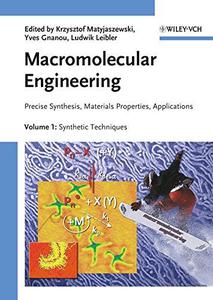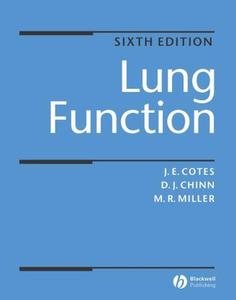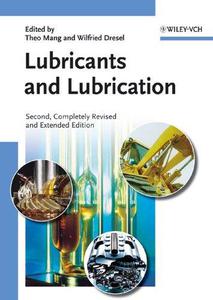
Macromolecular Engineering: Precise Synthesis, Materials Properties, Applications By
2007 | 2831 Pages | ISBN: 3527314466 | PDF | 27 MB
The book provides a state of the art description of the synthetic tools to precisely control various aspects of macromolecular structure including chain composition, microstructure, functionality and topology as well as modern characterization techniques at molecular and macroscopic level for various properties of well-defined (co)polymers in solution, bulk and at surfaces. The book addresses also the correlation of molecular structure with macroscopic properties additionally affected by processing. Finally, some emerging applications for the (co)polymers are highlighted.Content: Chapter 1 Macromolecular Engineering (pages 1-6): Prof. Dr. Krzysztof Matyjaszewski, Prof. Dr. Yves Gnanou and Prof. Dr. Ludwik LeiblerChapter 2 Anionic Polymerization of Vinyl and Related Monomers (pages 7-55): Michel Fontanille and Prof. Dr. Yves GnanouChapter 3 Carbocationic Polymerization (pages 57-101): Priyadarsi De and Rudolf FaustChapter 4 Ionic and Coordination Ring?Opening Polymerization (pages 103-159): Stanislaw Penczek, Andrzej Duda, Przemyslaw Kubisa and Stanislaw SlomkowskiChapter 5 Radical Polymerization (pages 161-215): Prof. Dr. Krzysztof Matyjaszewski and Wade A. BrauneckerChapter 6 Coordination Polymerization: Synthesis of New Homo? and Copolymer Architectures from Ethylene and Propylene Using Homogeneous Ziegler-Natta Polymerization Catalysts (pages 217-247): Andrew F. Mason and Geoffrey W. CoatesChapter 7 Recent Trends in Macromolecular Engineering Using Ring?Opening Metathesis Polymerization (pages 249-293): Damien Quemener, Valerie Heroguez and Prof. Dr. Yves GnanouChapter 8 Polycondensation (pages 295-349): Tsutomu YokozawaChapter 9 Supramolecular Polymer Engineering (pages 351-399): G. B. W. L. Ligthart, Oren A. Scherman, Rint P. Sijbesma and E. W. MeijerChapter 10 Polymer Synthesis and Modification by Enzymatic Catalysis (pages 401-477): Shiro Kobayashi and Masashi OhmaeChapter 11 Biosynthesis of Protein?Based Polymeric Materials (pages 479-517): Robin S. Farmer, Manoj B. Charati and Kristi L. KiickChapter 12 Macromolecular Engineering of Polypeptides Using the Ring?Opening Polymerization of ??Amino Acid N?Carboxyanhydrides (pages 519-540): Harm?Anton Klok and Timothy J. DemingChapter 13 Segmented Copolymers by Mechanistic Transformations (pages 541-604): M. Atilla Tasdelen and Yusuf YagciChapter 14 Polymerizations in Aqueous Dispersed Media (pages 605-642): Bernadette Charleux and Francois GanachaudChapter 15 Polymerization under Light and Other External Stimuli (pages 643-672): Jean Pierre Fouassier, Xavier Allonas and Jacques LaleveeChapter 16 Inorganic Polymers with Precise Structures (pages 673-730): David A. Rider and Ian MannersChapter 1 Tacticity (pages 731-773): Tatsuki KitayamaChapter 2 Synthesis of Macromonomers and Telechelic Oligomers by Living Polymerizations (pages 775-812): Bernard Boutevin, Cyrille Boyer, Ghislain David and Pierre LutzChapter 3 Statistical, Alternating and Gradient Copolymers (pages 813-838): Bert KlumpermanChapter 4 Multisegmental Block/Graft Copolymers (pages 839-873): Constantinos TsitsilianisChapter 5 Controlled Synthesis and Properties of Cyclic Polymers (pages 875-908): Alain Deffieux and Redouane BorsaliChapter 6 Polymers with Star?Related Structures (pages 909-972): Nikos Hadjichristidis, Marinos Pitsikalis and Hermis IatrouChapter 7 Linear Versus (Hyper)branched Polymers (pages 973-1005): Hideharu Mori, Axel H. E. Muller and Peter F. W. SimonChapter 8 From Stars to Microgels (pages 1007-1056): Daniel TatonChapter 9 Molecular Design and Self?Assembly of Functional Dendrimers (pages 1057-1102): Wei?Shi Li, Woo?Dong Jang and Takuzo AidaChapter 10 Molecular Brushes - Densely Grafted Copolymers (pages 1103-1135): Brent S. Sumerlin and Prof. Dr. Krzysztof MatyjaszewskiChapter 11 Grafting and Polymer Brushes on Solid Surfaces (pages 1137-1178): Takeshi Fukuda, Yoshinobu Tsujii and Kohji OhnoChapter 12 Hybrid Organic Inorganic Objects (pages 1179-1207): Stefanie M. Gravano and Timothy E. PattenChapter 13 Core-Shell Particles (pages 1209-1247): Anna Musyanovych and Katharina LandfesterChapter 14 Polyelectrolyte Multilayer Films - A General Approach to (Bio)functional Coatings (pages 1249-1305): Nadia Benkirane?Jessel, Philippe Lavalle, Vincent Ball, Joelle Ogier, Bernard Senger, Catherine Picart, Pierre Schaaf, Jean?Claude Voegel and Gero DecherChapter 15 Bio?Inspired Complex Block Copolymers/Polymer Conjugates and Their Assembly (pages 1307-1339): Markus Antonietti, Hans G. Borner and Helmut SchlaadChapter 16 Complex Functional Macromolecules (pages 1341-1385): Zhiyun Chen, Chong Cheng, David S. Germack, Padma Gopalan, Brooke A. van Horn, Shrinivas Venkataraman and Karen L. WooleyChapter 1 Self?Assembly and Morphology Diagrams for Solution and Bulk Materials: Experimental Aspects (pages 1387-1430): Vahik Krikorian, Youngjong Kang and Edwin L. ThomasChapter 2 Simulations (pages 1431-1469): Denis Andrienko and Kurt KremerChapter 3 Transport and Electro?Optical Properties in Polymeric Self?Assembled Systems (pages 1471-1514): Olli Ikkala and Gerrit ten BrinkeChapter 4 Atomic Force Microscopy of Polymers: Imaging, Probing and Lithography (pages 1515-1574): Sergei S. Sheiko and Martin MollerChapter 5 Scattering from Polymer Systems (pages 1575-1604): Megan L. Ruegg and Nitash P. BalsaraChapter 6 From Linear to (Hyper) Branched Polymers: Dynamics and Rheology (pages 1605-1648): Thomas C. B. McLeishChapter 7 Determination of Bulk and Solution Morphologies by Transmission Electron Microscopy (pages 1649-1685): Volker Abetz, Richard J. Spontak and Yeshayahu TalmonChapter 8 Polymer Networks (pages 1687-1730): Karel Dusek and Miroslava Duskova?Smrc?kovaChapter 9 Block Copolymers for Adhesive Applications (pages 1731-1751): Costantino CretonChapter 10 Reactive Blending (pages 1753-1782): Robert JeromeChapter 11 Predicting Mechanical Performance of Polymers (pages 1783-1825): Han E. H. Meijer, Leon E. Govaert and Tom A. P. EngelsChapter 12 Scanning Calorimetry (pages 1827-1880): Rene Androsch and Bernhard WunderlichChapter 13 Chromatography of Polymers (pages 1881-1936): Wolfgang RadkeChapter 14 NMR Spectroscopy (pages 1937-1965): Hans Wolfgang SpiessChapter 15 High?Throughput Screening in Combinatorial Polymer Research (pages 1967-1999): Michael A. R. Meier, Richard Hoogenboom and Ulrich S. SchubertChapter 1 Applications of Thermoplastic Elastomers Based on Styrenic Block Copolymers (pages 2001-2031): Dale L. Handlin, Scott Trenor and Kathryn WrightChapter 2 Nanocomposites (pages 2033-2070): Michael Alexandre and Philippe DuboisChapter 3 Polymer/Layered Filler Nanocomposites: An Overview from Science to Technology (pages 2071-2134): Masami OkamotoChapter 4 Polymeric Dispersants (pages 2135-2180): Frank Pirrung and Clemens AuschraChapter 5 Polymeric Surfactants (pages 2181-2223): Henri Cramail, Eric Cloutet and Karunakaran RadhakrishnanChapter 6 Molecular and Supramolecular Conjugated Polymers for Electronic Applications (pages 2225-2262): Andrew C. Grimsdale and Klaus MullenChapter 7 Polymers for Microelectronics (pages 2263-2293): Christopher W. Bielawski and C. Grant WillsonChapter 8 Applications of Controlled Macromolecular Architectures to Lithography (pages 2295-2330): Daniel Bratton, Ramakrishnan Ayothi, Nelson Felix and Christopher K. OberChapter 9 Microelectronic Materials with Hierarchical Organization (pages 2331-2367): G. Dubois, R. D. Miller and James L. HedrickChapter 10 Semiconducting Polymers and Their Optoelectronic Applications (pages 2369-2408): Nicolas Leclerc, Thomas Heiser, Cyril Brochon and Georges HadziioannouChapter 11 Polymer Encapsulation of Metallic and Semiconductor Nanoparticles: Multifunctional Materials with Novel Optical, Electronic and Magnetic Properties (pages 2409-2449): Jeffrey Pyun and Todd EmrickChapter 12 Polymeric Membranes for Gas Separation, Water Purification and Fuel Cell Technology (pages 2451-2491): Kazukiyo Nagai, Young Moo Lee and Toshio MasudaChapter 13 Utilization of Polymers in Sensor Devices (pages 2493-2539): Basudam Adhikari and Alok Kumar SenChapter 14 Polymeric Drugs (pages 2541-2595): Tamara Minko, Jayant J. Khandare and Sreeja JayantChapter 15 From Biomineralization Polymers to Double Hydrophilic Block and Graft Copolymers (pages 2597-2643): Helmut ColfenChapter 16 Applications of Polymer Bioconjugates (pages 2645-2687): Joost A. Opsteen and Jan C. M. van HestChapter 17 Gel: A Potential Material as Artificial Soft Tissue (pages 2689-2717): Yong Mei Chen, Jian Ping Gong and Yoshihito OsadaChapter 18 Polymers in Tissue Engineering (pages 2719-2742): Jeffrey A. Hubbell

MOUNTAINS: We live in a beautiful world. by Spencer Eltringham
English | May 10, 2021 | ISBN: N/A | ASIN: B094NG191H | 50 pages | PDF | 49 Mb
A mountain is an elevated portion of the Earth's crust, generally with steep sides that show significant exposed bedrock. A mountain differs from a plateau in having a limited summit area, and is larger than a hill, typically rising at least 300 metres (1000 feet) above the surrounding land. A few mountains are isolated summits, but most occur in mountain ranges.Mountains are formed through tectonic forces, erosion, or volcanism, which act on time scales of up to tens of millions of years. Once mountain building ceases, mountains are slowly leveled through the action of weathering, through slumping and other forms of mass wasting, and through erosion by rivers and glaciers.High elevations on mountains produce colder climates than at sea level at similar latitude. These colder climates strongly affect the ecosystems of mountains: different elevations have different plants and animals. Because of the less hospitable terrain and climate, mountains tend to be used less for agriculture and more for resource extraction, such as mining and logging, and recreation, such as mountain climbing and skiing.The highest mountain on Earth is Mount Everest in the Himalayas of Asia, whose summit is 8,850 m (29,035 ft) above mean sea level. The highest known mountain on any planet in the Solar System is Olympus Mons on Mars at 21,171 m (69,459 ft).

Luxembourg Travel Information: Planning Your Holidays in Luxembourg: Travel Guide Book by Joshua Gilberto
English | 2022 | ISBN: N/A | ASIN: B0B6ZY4J9G | 63 pages | EPUB | 5.41 Mb
Travel to Belarus and Ukraine, two of Europe's least visited and least familiar nations. After the destruction of WWII, time slowed dramatically here, yet these lovely countries are emerging from the shadows of their Soviet past to reclaim their rightful places on the international stage. Visit a Kiev artist, eat with a Chisinau family, and go on a day excursion to the Transdniester region, a tiny stretch of Moldovan terrain where separatists have proclaimed disputed independence and lavish restaurants and, veering eastward, a cold glass of cremant on the vine-laden banks of the Moselle makes a fine way to end the day.

Lung Function: Physiology, Measurement and Application in Medicine, Sixth Edition By J. E. Cotes, D. J. Chinn, M. R. Miller(auth.)
2006 | 634 Pages | ISBN: 0632064935 | PDF | 13 MB
The only text to cover lung function assessment from first principles including methodology, reference values and interpretationNew for this edition:- More illustrations to convey concepts clearly to the busy physician- Text completely re-written in a contemporary style: includes user-friendly equations and more diagrams- New material covering the latest advances in the treatment of lung function, including more on sleep-related disorders, a stronger clinical and practical bias and more on new techniques and equipment- Uses the standard Vancouver referencing systemWhat the experts say:"I have always considered Dr Cotes' book the most authoritative book published on lung function. It is also the most comprehensive. "Dr Robert Crapo, Pulmonary Division, LDS Hospital, Salt Lake City, USA"I think I can fairly speak on behalf of staff in lung function departments the length and breadth of the country - that a sixth edition of Cotes would be gratefully received."Dr Brendan Cooper, Clinical Respiratory Scientist, Nottingham City HospitalContent: Chapter 1 Early Developments and Future Prospects (pages 1-12): Chapter 2 Getting Started (pages 13-22): Chapter 3 Development and Functional Anatomy of the Respiratory System (pages 23-30): Chapter 4 Body Size and Anthropometric Measurements (pages 31-41): Chapter 5 Numerical Interpretation of Physiological Variables (pages 42-51): Chapter 6 Basic Terminology and Gas Laws (pages 52-58): Chapter 7 Basic Equipment and Measurement Techniques (pages 59-81): Chapter 8 Respiratory Surveys (pages 82-96): Chapter 9 Thoracic Cage and Respiratory Muscles (pages 97-110): Chapter 10 Lung Volumes (pages 111-117): Chapter 11 Lung and Chest Wall Elasticity (pages 118-129): Chapter 12 Forced Ventilatory Volumes and Flows (Ventilatory Capacity) (pages 130-142): Chapter 13 Determinants of Maximal Flows (Flow Limitation) (pages 143-149): Chapter 14 Theory and Measurement of Respiratory Resistance (Including Whole Body Plethysmography) (pages 150-163): Chapter 15 Control of Airway Calibre and Assessment of Changes (pages 164-180): Chapter 16 Distribution of Ventilation (pages 181-195): Chapter 17 Distribution and Measurement of Pulmonary Blood Flow (pages 196-208): Chapter 18 Inter?Relations between Lung Ventilation and Perfusion (V?A/Q?) (pages 209-223): Chapter 19 Transfer of Gases into Blood in Alveolar Capillaries (pages 224-233): Chapter 20 Transfer Factor (Diffusing Capacity) for Carbon Monoxide and Nitric Oxide (Tl,CO, Tl,NO, Dm and VC) (pages 234-257): Chapter 21 The Oxygenation of Blood (pages 258-274): Chapter 22 Gas Exchange for Carbon Dioxide and Acid-Base Balance (pages 275-284): Chapter 23 Control of Respiration (pages 285-303): Chapter 24 Newborn Babies, Infants and Young Children (Ages 0-6 Years) (pages 304-314): Chapter 25 Normal Lung Function from Childhood to Old Age (pages 315-332): Chapter 26 Reference Values for Lung Function in White (Caucasian) Children and Adults (pages 333-365): Chapter 27 Genetic Diversity: Reference Values in Non?Caucasians (pages 366-381): Chapter 28 Physiology of Exercise and Changes Resulting from Lung Disease (pages 383-415): Chapter 29 Exercise Testing and Interpretation, Including Reference Values (pages 416-436): Chapter 30 Assessment of Exercise Limitation, Disability and Residual Ability (pages 437-445): Chapter 31 Exercise in Children (pages 446-451): Chapter 32 Investigation and Physiology of Breathing during Sleep (pages 453-463): Chapter 33 Assessment and Treatment of Sleep Related Breathing Disorders (pages 464-469): Chapter 34 Hypobaria: High Altitude and Aviation Physiology and Medicine (pages 471-486): Chapter 35 Immersion in Water, Hyperbaria and Hyperoxia Including O2 Therapy (pages 487-498): Chapter 36 Cold, Heat and the Lungs (pages 499-503): Chapter 37 Airborne Respiratory Hazards: Features, Protective Mechanisms and Consequences (pages 504-528): Chapter 38 Patterns of Abnormal Function in Lung Disease (pages 529-538): Chapter 39 Strategies for Assessment (pages 539-544): Chapter 40 Lung Function in Asthma, COPD, Emphysema and Diffuse Lung Fibrosis (pages 545-559): Chapter 41 How Individual Diseases Affect Lung Function (Compendium) (pages 560-592): Chapter 42 Lung Function in Relation to General Anaesthesia and Artificial Ventilation (pages 593-603): Chapter 43 Lung Function in Relation to Surgery (pages 604-609): Chapter 44 Pulmonary Rehabilitation (pages 610-615):

Winston A. Gould, "Luftwaffe Maritime Operations in World War II: Thought, Organization and Technology"
English | ISBN: 1249844886 | 2012 | 62 pages | EPUB | 4 MB
The development of airpower can be traced to three key elements: thought, organization and technology. The Luftwaffe of World War II is no different. This paper will examine the Luftwaffe's thought, organization and technology as it pertains to maritime operations, or as the modern United States Air Force (USAF) calls it, Countersea Operations. These maritime operations will include direct support of the Kriegsmarine and independent Luftwaffe operations against the Allies. Luftwaffe thought will show that doctrinally the Luftwaffe was not as prepared for the maritime role its leaders thrust upon it, but flexibility and the application of the tenets of airpower provided the basis for adaptation. Also included will be an examination of the fierce rivalry between the Luftwaffe and Kreigsmarine senior leadership and how this interfered with the conduct of countersea operations. Luftwaffe organization during World War II provided a more than adequate basis for conducting the countersea campaign. The adaptability of the operational and support structure allowed the Luftwaffe to accomplish a variety of missions, even as their aircraft and weapons were proving deficient. Finally, the Luftwaffe was at the forefront of innovation in the field of aviation technology, including airframe and weapon development. Once again, interference by senior leadership and equipment teething problems combined with increasing Allied attacks cost the Luftwaffe precious time.

Lubricants and Lubrication, Second Edition By
2007 | 893 Pages | ISBN: 3527314970 | PDF | 9 MB
This completely revised second edition incorporates the latest data available and reflects the knowledge of one of the largest companies active in the business. The authors take into account the interdisciplinary character of the field, considering aspects of engineering, materials science, chemistry, health and safety. The result is a volume providing chemists and engineers with a clear interdisciplinary introduction and guide to all major lubricant applications, focusing not only on the various products but also on specific application engineering criteria.Content: Chapter 1 Lubricants and their Market (pages 1-6): Prof.Dr.?Ing. Theo MangChapter 2 Lubricants in the Tribological System (pages 7-22): Prof.Dr.?Ing. Theo MangChapter 3 Rheology of Lubricants (pages 23-33): Prof.Dr.?Ing. Theo MangChapter 4 Base Oils (pages 34-62): Prof.Dr.?Ing. Theo Mang and Dr.?Ing. Georg LinggChapter 5 Synthetic Base Oils (pages 63-87): Dr.rer.nat. Wilfried DreselChapter 6 Additives (pages 88-118): Dr.rer.nat. Jurgen BraunChapter 7 Lubricants in the Environment (pages 119-182): Dipl.?Phys. Rolf LutherChapter 8 Disposal of Used Lubricating Oils (pages 183-190): Prof.Dr.?Ing. Theo MangChapter 9 Lubricants for Internal Combustion Engines (pages 191-229): Dr.rer.nat. Manfred Harperscheid and Dr.rer.nat. Jurgen OmeisChapter 10 Gear Lubrication Oils (pages 230-273): Dr.?Ing. Thorsten BartelsChapter 11 Hydraulic Oils (pages 274-337): Dipl.?Ing. Wolfgang BockChapter 12 Compressor Oils (pages 338-366): Dipl.?Ing. Wolfgang Bock and Dr.?Ing. Georg LinggChapter 13 Turbine Oils (pages 367-383): Dipl.?Ing. Wolfgang BockChapter 14 Metalworking Fluids: Sections 14.1-14.5 (pages 384-454): Prof.Dr.?Ing. Theo Mang, Dipl.?Ing. Carmen Freiler and Dr.rer.nat. Dietrich HornerChapter 14 Metalworking Fluids: Sections 14.6-14.10 (pages 454-521): Prof.Dr.?Ing. Theo Mang, Dipl.?Ing. Carmen Freiler and Dr.rer.nat. Dietrich HornerChapter 15 Forming Lubricants: Sections 15.1-15.2 (pages 522-605): Prof.Dr.?Ing. Theo Mang, Dipl.?Ing. Franz Kubicki, Dr.rer.nat. Achim Losch and Dr.rer.nat. Wolfgang BussChapter 15 Forming Lubricants: Sections 15.3-15.4 (pages 606-647): Prof.Dr.?Ing. Theo Mang and Dr.rer.nat. Wolfgang BussChapter 16 Lubricating Greases (pages 648-693): Dr.rer.nat. Wilfried Dresel and Dipl.?Ing. Rolf?Peter HecklerChapter 17 Solid Lubrication (pages 694-714): Dr.?Ing. Christian BuschChapter 18 Laboratory Methods for Testing Lubricants (pages 715-735): Siegfried Noll and Roman MullerChapter 19 Mechanical-Dynamic Test Methods for Lubricants (pages 736-785): Dr.?Ing. Thorsten Bartels

Low-Grade Metamorphism By
1998 | 321 Pages | ISBN: 0632047569 | PDF | 53 MB
Low-Grade Metamorphism explores processes and transformations in rocks during the early stages of metamorphic recrystallization. There has been little analysis and documentation of this widespread phenomenon, especially of the substantial and exciting advances that have taken place in the subject over the last decade. This book rectifies that shortfall, building on the foundations of Low-Temperature Metamorphism by Martin Frey (1987). The editors have invited contributions from an internationally acknowledged team of experts, who have aimed the book at advanced undergraduate and graduate students as well as researchers in the field. Contributions from internationally acknowledged experts. Documents the substantial and exciting advances that have taken place in the subject over the last decade.Content: Chapter 1 Low?Temperature Metamorphism: An Overview (pages 1-9): D. Robinson and R. J. MerrimanChapter 2 Very Low?Grade Metapelites: Mineralogy, Microfabrics and Measuring Reaction Progress (pages 10-60): R. J. Merriman and D. R. PeacorChapter 3 Patterns of Very Low?Grade Metamorphism in Metapelitic Rocks (pages 61-107): R. J. Merriman and M. FreyChapter 4 Petrological Methods for the Study of Very Low?Grade Metabasites (pages 108-142): P. Schiffman and H. W. DayChapter 5 Patterns of Regional Low?Grade Metamorphism in Metabasites (pages 143-168): D. Robinson and R. E. BevinsChapter 6 Very Low?Grade Hydrothermal Metamorphism of Basic Igneous Rocks (pages 169-201): J. C. AltChapter 7 Isotopic Dating of Very Low?Grade Metasedimentary and Metavolcanic Rocks: Techniques and Methods (pages 202-226): N. Clauer and S. ChaudhuriChapter 8 Application of Stable Isotope Geochemistry to Low?Grade Metamorphic Rocks (pages 227-260): Z. D. Sharp

Locus Amoenus: Gardens and Horticulture in the Renaissance By Alexander Samson (ed.)
2012 | 208 Pages | ISBN: 1444361511 | PDF | 4 MB
Locus Amoenus provides a pioneering collection of new perspectives on Renaissance garden history, and the impact of its development. Experts in the field illustrate the extent of our knowledge of how the natural world looked and how humans related to their environment. A ground-breaking collection of new perspectives on garden history Essays demonstrate the extent of our knowledge of how the natural world looked and how humans related to their environment The book's broad coverage includes botany and herbals, literary reflections of changing ideas of landscape and nature, and human's place within it Contributors come from a wide range of experts, including archaeologists, scholars and the librarian and archivist to the Royal Horticultural Society Reflects the growing emergence of this field, which has been assisted both by archaeology and ideas from green studies and environmental criticism Richly illustrated throughout Content: Chapter 1 The world of the Renaissance herbal (pages 24-41): Brent ElliottChapter 2 Clinging to the past: medievalism in the English 'Renaissance' garden (pages 42-69): Paula HendersonChapter 3 River gods: personifying nature in sixteenth?century Italy (pages 70-94): Claudia LazzaroChapter 4 Dissembling his art: 'Gascoigne's Gardnings' (pages 95-110): Susan C. StaubChapter 5 'My innocent diversion of gardening': Mary Somerset's plants (pages 111-123): Jennifer MunroeChapter 6 Outdoor pursuits: Spanish gardens, the huerto and Lope de Vega's Novelas a Marcia Leonarda (pages 124-150): Alexander SamsonChapter 7 Experiencing the past: the archaeology of some Renaissance gardens (pages 151-182): Brian Dix

Local Planning for Terror and Disaster: From Bioterrorism to Earthquakes By
2012 | 266 Pages | ISBN: 1118112865 | PDF | 4 MB
Local Planning for Terror and Disastergives voice to experts in key fields involved with local preparedness, assessing the quality of preparedness in each field, and offering directions for improvement.Introductory chapters provide overviews of terror medicine, security and communications, which are indispensable to successful preparedness, while subsequent chapters concentrate on a particular field and how responders from that field communicate and interact with others during and after an event.Thus, achapter by a physician discusses not only the doctor's role but how that role is, or should be, coordinated with emergency medical technicians and police.Similarly, chaptersby law enforcement figures also review police responsibilities and interactions with nurses, EMTs, volunteers and other relevant responders. Developed from topics at recent Symposia on Terror Medicine and Security, Local Planning also encompassesaspects of emergency and disaster medicine, as well as techniques for diagnosis, rescue, coordination and security that are distinctive to a terrorist attack.Each chapteralso includes acase study that demonstrates preparedness, or lack thereof, for a real or hypothetical event, including lessons learned, next steps, and areas for improvement inthisglobal erawhich increasingly calls for preparedness at a local level.Content: Chapter 1 Preparedness, Uncertainty, and Terror Medicine (pages 1-15): Leonard A. ColeChapter 2 Bioterrorism and the Communication of Uncertainty (pages 17-27): Leonard A. Cole, Laura H. Kahn and Peter M. SandmanChapter 3 Responding to Disaster and Terrorism: The Central Role of Communication (pages 29-43): Steven M. BeckerChapter 4 The Role of the Emergency Physician (pages 45-60): Emily G. Kidd, Donald H. Jenkins and Craig A. ManifoldChapter 5 The Role of the Nurse (pages 61-70): Dian Dowling Evans, Samuel E. Shartar and James W. GordonChapter 6 The Role of the Dentist (pages 71-81): David L. GlotzerChapter 7 The Role of the Emergency Medical Technician (pages 83-93): Brendan McCluskey and Henry P. CortacansChapter 8 The Role of the Mental Health Professional (pages 95-107): Ann E. Norwood, Lisa M. Brown and Gerard A. JacobsChapter 9 The Role of the Manager of Mass Casualty and Disaster Events (pages 109-122): Shmuel C. Shapira and Limor Aharonson?DanielChapter 10 The Role of Public Health (pages 123-137): Henry Falk and Isaac AshkenaziChapter 11 The Role of the Hospital Receiver (pages 139-152): Mark A. MerlinChapter 12 Managing Traumatic Stress (pages 153-162): Steven M. CrimandoChapter 13 The Role of the On?Scene Bystander and Survivor (pages 163-175): Bruria AdiniChapter 14 The Role of the Trained Volunteer (pages 177-188): Brenda D. Phillips, Njoki Mwarumba and Debra WagnerChapter 15 Bioterrorism, Biosecurity, and the Laboratory (pages 189-199): Nancy D. Connell and James NetterwaldChapter 16 The Role of the Law Enforcement Officer (pages 201-213): Graeme R. Newman and Ronald V. ClarkeChapter 17 A Model Case of Counterterrorism: Thwarting a Subway Bombing (pages 215-226): Joshua SinaiChapter 18 The Newest Security Threat: Cyber?Conflict (pages 227-238): Panayotis A. YannakogeorgosChapter 19 Preparedness, Black Swans, and Salient Themes (pages 239-248): Nancy D. Connell and Leonard A. Cole

Liquidated Damages and Extensions of Time: In Construction Contracts, Third Edition By Brian Eggleston(auth.)
2008 | 404 Pages | ISBN: 1405118156 | PDF | 4 MB
Liquidated damages and extensions of time are complex subjects, frequently forming the basis of contract claims made under the standard building and civil engineering contracts. Previous editions of Liquidated Damages and Extensions of Time are highly regarded as a guide for both construction industry professionals and lawyers to this complex area. The law on time and damages continues to develop with an increasing flow of judgments from the courts. Alongside this, the standard forms of contract have also developed over time to reflect prevailing approaches to contractual relationships. Against this background a third edition will be welcomed by construction professionals and lawyers alike. Retaining the overall approach of the previous editions, the author clarifies, in a highly readable but legally rigorous way, the many misunderstandings on time and damages which abound in the construction industry. The third edition takes account of a large volume of new case law since the previous edition was published over ten years ago, includes a new chapter on delay analysis and features significantly expanded chapters on penalty clauses, the effects of conditions precedent and time-bars, and the complexities of causation.Content: Chapter 1 Introduction (pages 1-15): Chapter 2 Time in Contracts (pages 16-40): Chapter 3 Damages for Late Completion (pages 41-70): Chapter 4 Liquidated Damages and Penalties (pages 71-130): Chapter 5 Prevention (pages 131-155): Chapter 6 Legal Construction of Liquidated Damages Clauses (pages 156-169): Chapter 7 Effects of Determination (pages 170-174): Chapter 8 Problems with Sectional Completion (pages 175-178): Chapter 9 Application to Sub?Contractors (pages 179-187): Chapter 10 Recovery of Liquidated Damages (pages 188-208): Chapter 11 Defences / Challenges to Liquidated Damages (pages 209-235): Chapter 12 Extensions of Time (pages 236-264): Chapter 13 Relevant Events (pages 265-284): Chapter 14 Causation and Concurrency (pages 285-301): Chapter 15 Programmes, Method Statements and Best Endeavours (pages 302-312): Chapter 16 Delay Analysis (pages 313-324): Chapter 17 Building Forms (pages 325-336): Chapter 18 Civil Engineering Forms (pages 337-355): Chapter 19 Process and Plant Forms (pages 356-371): Chapter 20 FIDIC Conditions of Contract 1999 (pages 372-378):


